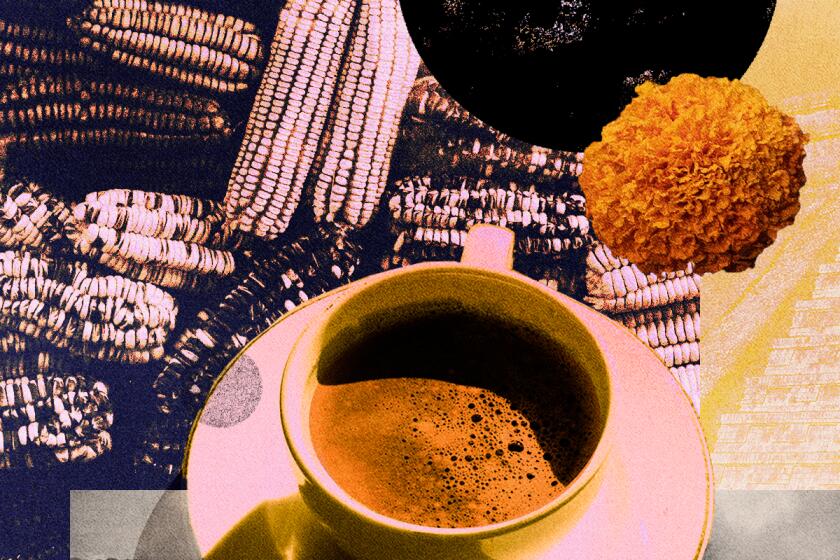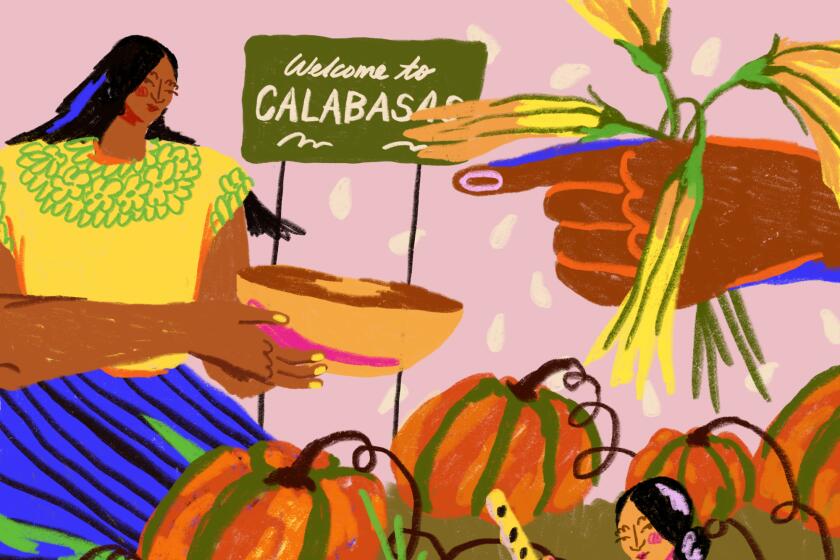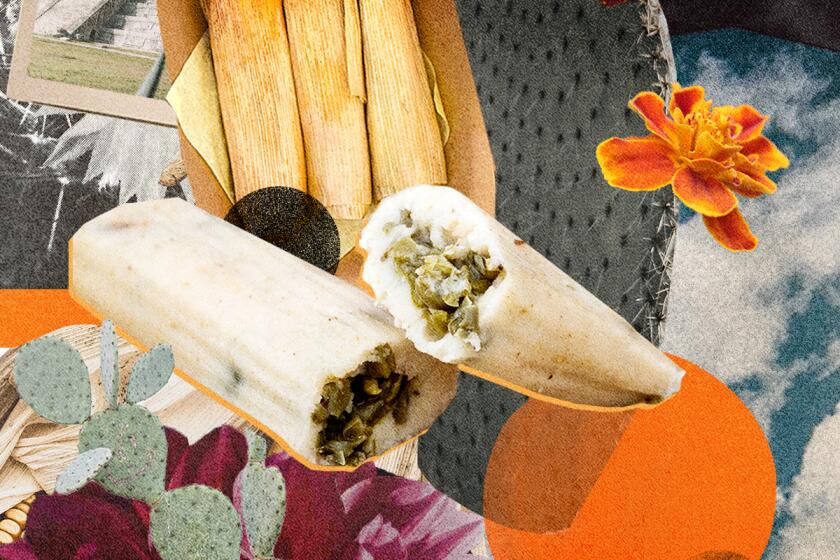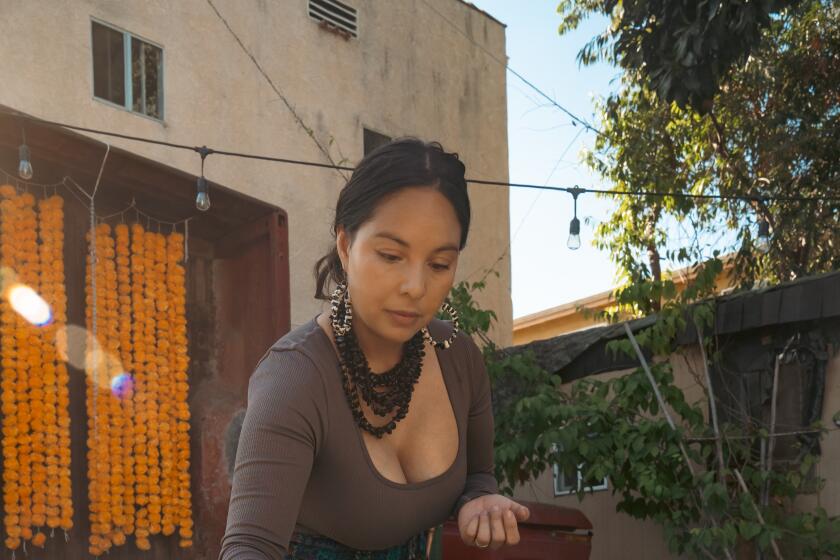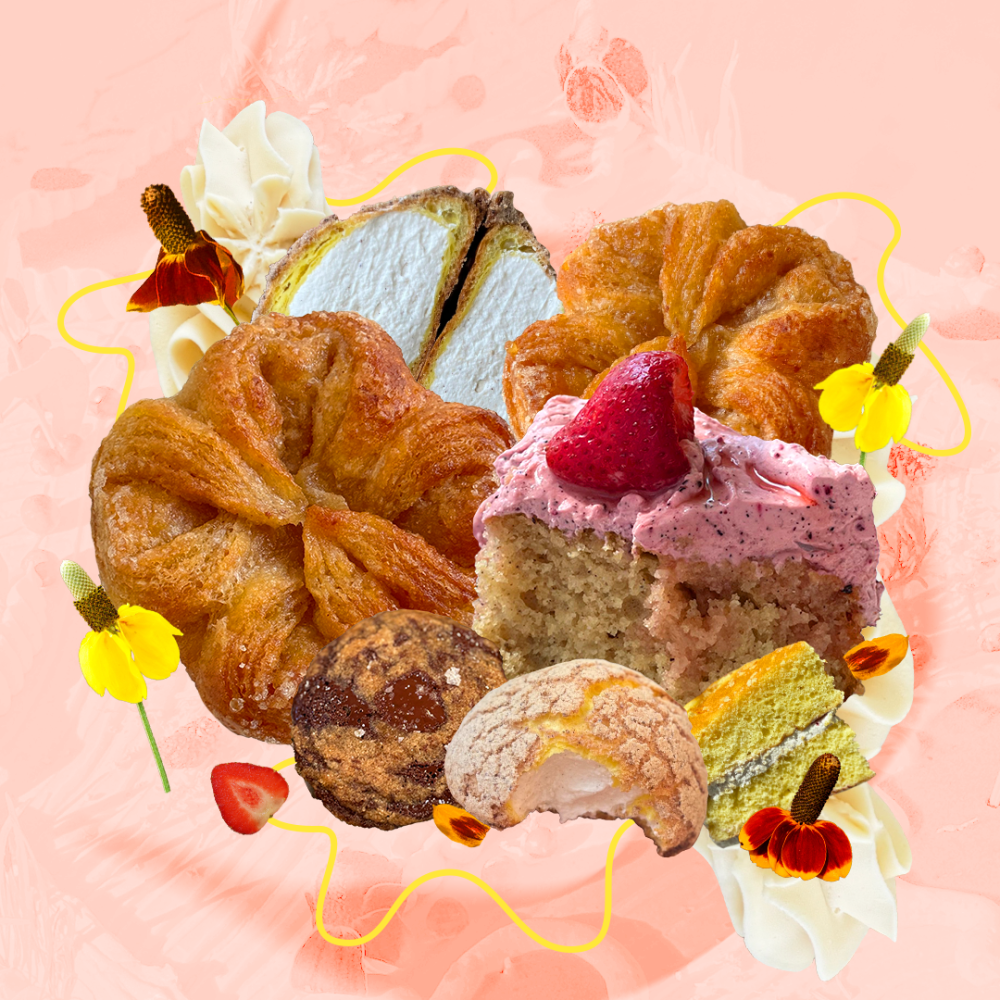
Maíz in Mexican pastry is not an entirely new concept. Think of coricos, a northeastern cookie originating with the Cáhita peoples, made using nixtamal or masa harina and vegetable shortening to get its golden ring shape. Consider also the gelatin-based nicuatole, a silky and shiny dessert commonly found in Oaxaca.
However, using maíz and masa harina in pastries like cakes, cookies and pie crusts proves to be a uniquely contemporary creation in the hands of modern panaderxs. Masa harina, a dried form of masa, is the product of a process called nixtamal that alkalinizes maíz (dried corn), makes it pliable and exists across the Americas. Masa is a millennial ingredient particularly special in Latinx kitchens, and especially so in Mexican kitchens where it is said to have originated, where it is used for a sundry of dishes. Today Mexican bakers and pastry chefs are infusing this historic ingredient to sweets in a reworked fashion to reconnect to the ingredient itself and all of the personal and cultural history it holds.
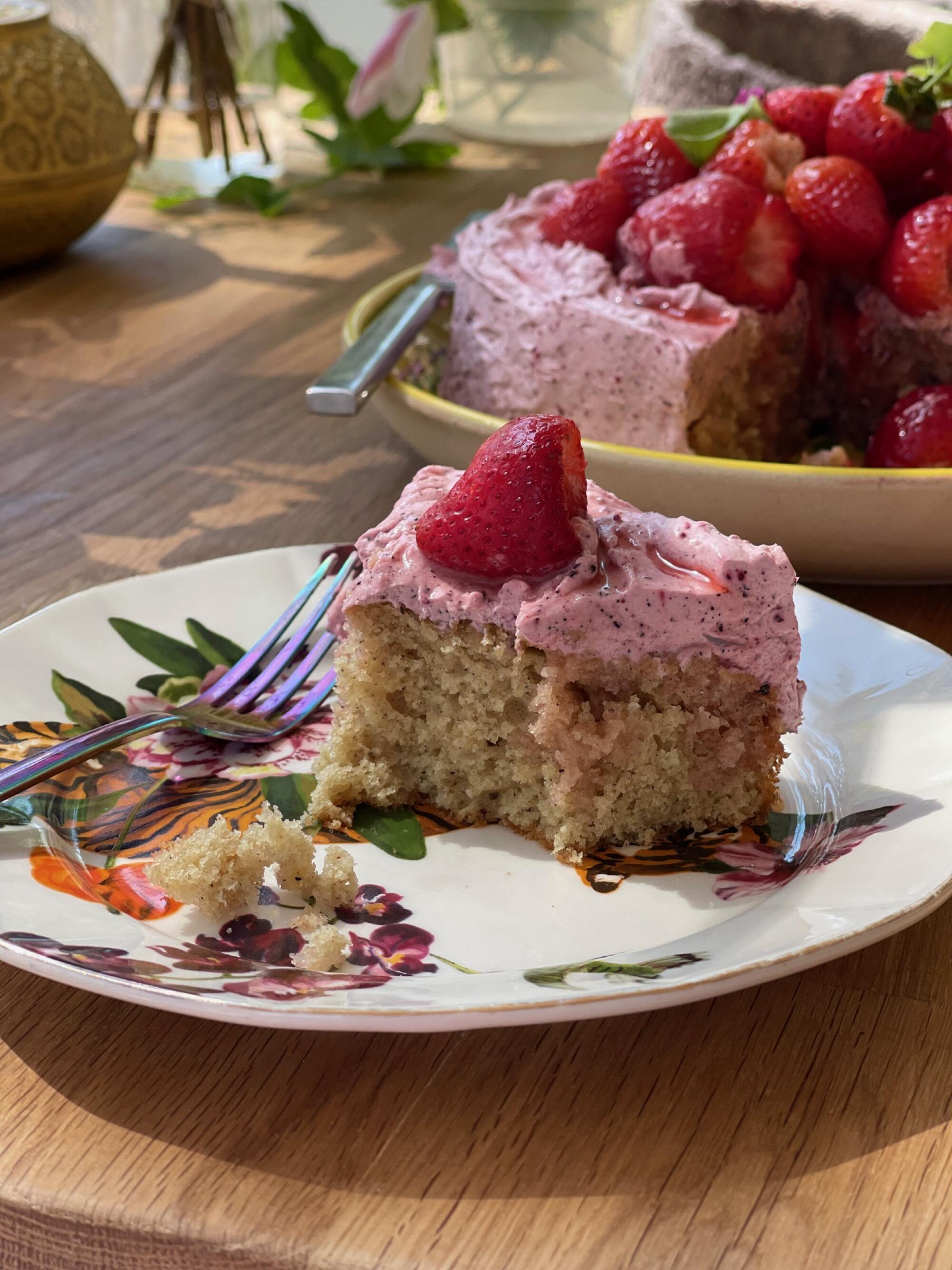
Panadera and recipe writer Teresa Finney, from At Heart Panadería in Atlanta, is one such pastry chef whose use of masa harina in the world of desserts widens the scope of imagination and flavor. Rooted in nostalgia and longing for family tamaleada traditions with her grandparents, she approaches masa in pastry with a sense of play.
“My thought process for using masa harina in a baked good is ‘Let’s just see if this works’, then going from there,” Finney said. “I’ve used it in cakes, pie dough, cookies and even as the main thickener in a custard.”
From birthing to long-distance running, atole has remained a ‘staple nourishment’ for thousands of years
To warm up in the crisp of frigid mornings or at the dawn of life, for energy and vitality, there is atole.
Finney says depending on how much is used, the flavor of masa harina has a “kinda smoky, earthy, corn flavor [that] can either just be a pleasant background flavor, or it can really dominate.” She adds that in pastry because so much butter is used, masa harina “compliments the butter flavor nicely.”
Her repertoire of masa harina desserts spans the gamut. There’s fluffy masa chiffon cake, masa harina snacking cake with macerated strawberries, masa harina chocolate chip cookies and custard, and that’s just her recipe work.
Her pan dulce menu currently includes a masa piloncillo cookie, a masa harina sugar cookie with a seasonal fruit glaze, a masa harina carrot cake and a fruity masa harina cake.
Finney says she has yet to find a flavor that wouldn’t pair with masa. “From fresh fruit, to chocolate, to root vegetables like sweet potato, I’ve used masa harina in tandem with all of these flavors and loved every iteration,” she said.
Pumpkins are known for a ghoulish grin and delicious taste. Their origins are rooted in Mexican history
There’s no symbol that screams Halloween more than the warm glow of an orange pumpkin. But as big a part of autumnal U.S. culture as they’ve become, their origins point a bit more south to Mexico.
Where there has been ease with flavor pairings, Finney expresses the challenges of using masa in a sweet application.
“It can be a big challenge to use it in a baked good. It’s not always as easy as just swapping it in for another kind of flour. Many recipe tests are usually involved,” Finney explains, saying the experience has been humbling. Like the custard for example, which took six tries before getting it right, and the pie dough, which is still being tested.
“The main challenges are getting the hydration right in whatever application I’m using the masa harina. For cakes and cookies, it may mean adding an extra egg or egg yolk; in bread it means adding more water or milk.” She explains this is due to the nixtamalization process and how it changes the dough.
Arturo Enciso and Ana Belén Salatino of Long Beach’s Gusto Bread, say adding maíz to baked goods felt natural, though in practice they agree with Finney.
For modern-day chefs who are descendants of Latin American cuisine, room exists for traditional recipes to bend and crack, opening up possibilities for something new and reflective of today’s culture.
“There has definitely been trial and error when I’ve baked with masa,” the bakers said in an email. “Since maize doesn’t contain gluten, using too much of it can result in a very dense and compacted product, so it’s important to get the ratios dialed in for any given recipe to achieve the desired result.”
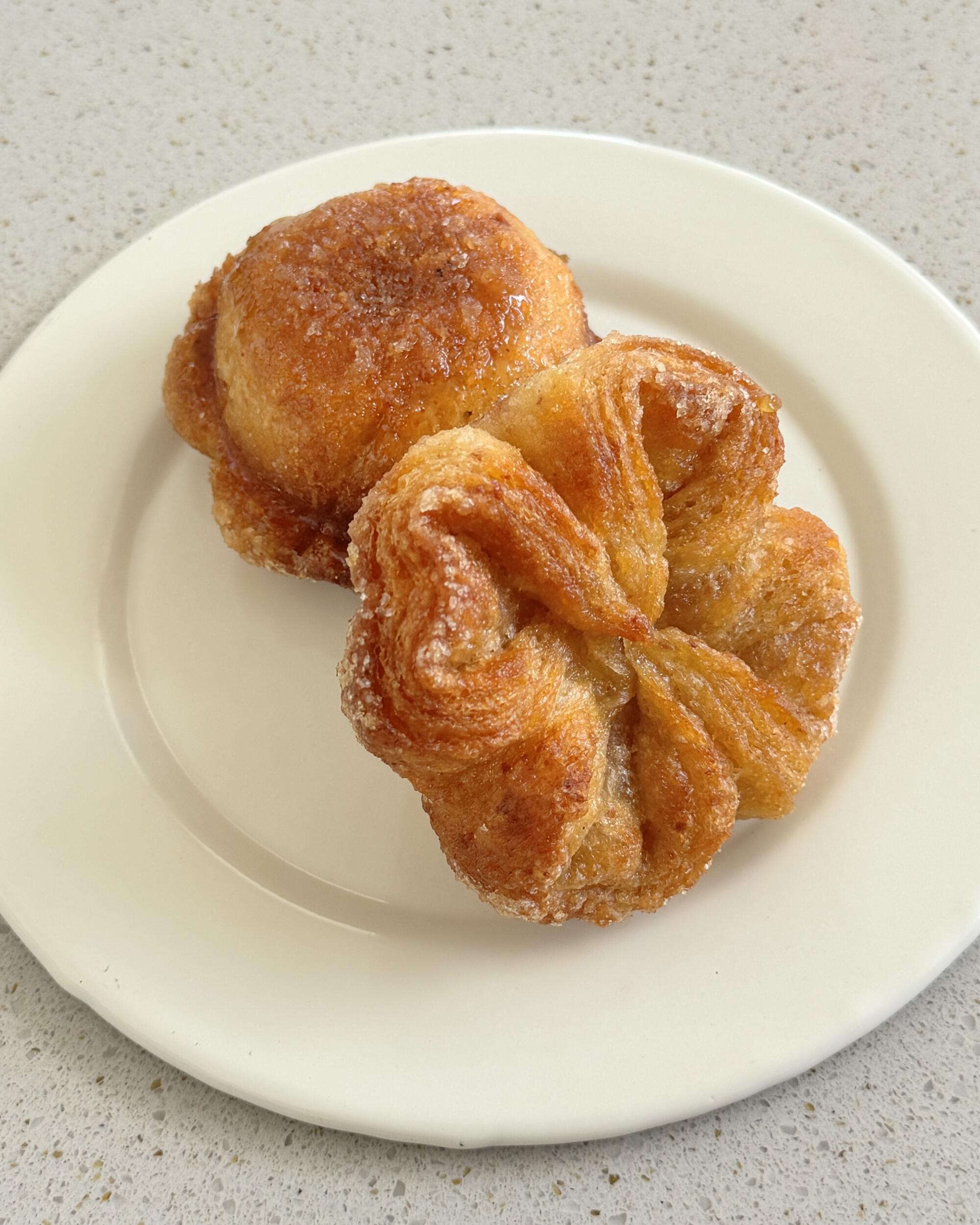
At Gusto Bread, a widely revered institution and cafe, Enciso and Salatino work with fresh nixtamal, and rotate their selection weekly.
They’ve managed to create a French pastry made using laminated dough, which creates flaky, buttery layers. The pastry Enciso and Salatino injected masa into is called kouign amann, and they describe it as a rustic pastry.
“I became enamored with it and decided to try it with my masa bread dough and upon tasting the final product, it brought me so much joy,” Enciso said. “It felt like home. Truly pan dulce.” It’s dubbed the Nixtamal Queen, and like Enciso and Salatino write, “[it] is a reflection of our modern culture and the times: combining sourdough, maize and lamination.”
Known for her vegan hibiscus tacos, Stephanie Villegas also hosts artisanal chocolate classes where she teaches students the process using ancestral tools and techniques.
Aside from the beloved Nixtamal Queen, Gusto Bread offers champurrado during colder months, and an atole cake that’s a play on tres leches.
“The atole is the pool of creamy sauce you scoop up with each bite of cake, and is complemented by the roasted corn infused white chocolate ganache whip on top,” Enciso says. “It’s subtle, comforting and refreshing.”
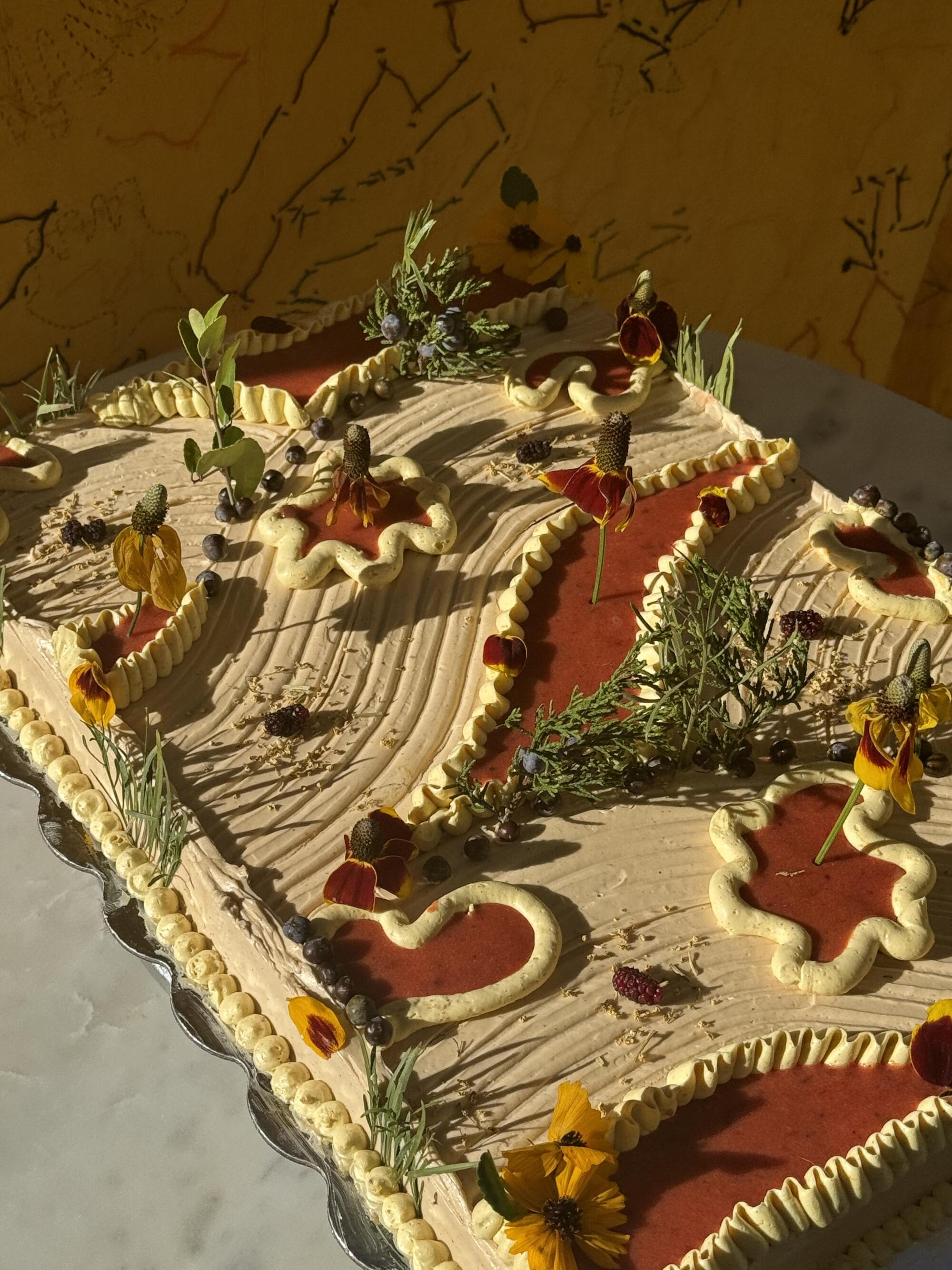
In Texas, panaderx Ariana Díaz makes cakes inspired by nature both visually and what grows around them to flavor and decorate with. Her cakes include zucchini soaked in oregano sweet cream, as well as chocolate pumpkin decorated with locally foraged pea flowers, curly shoots and green tomatoes.
Díaz says they learned how to cook professionally in a kitchen that operated on one rule: no flour. As much of a challenge as it was, it opened up new avenues and gave way to personalized methods of baking and cooking that broke the mold of Eurocentric techniques. Díaz says testing recipes with masa was initially intimidating because of the lack of literature and technique that existed.
For more than three decades, Black chefs in Los Angeles have been making the taco their own, turning it into a staple of California soul cuisine.
“I love it because masa-based pastries require bakers to be adaptable, open, and intuitive when most pastry is defined by technique, scientific exactness and consistency,” Díaz said. “Pastry could use a little more open-mindedness or else we will just keep riffing off the same old techniques rather than exploring what methods may have not been thought of yet.”
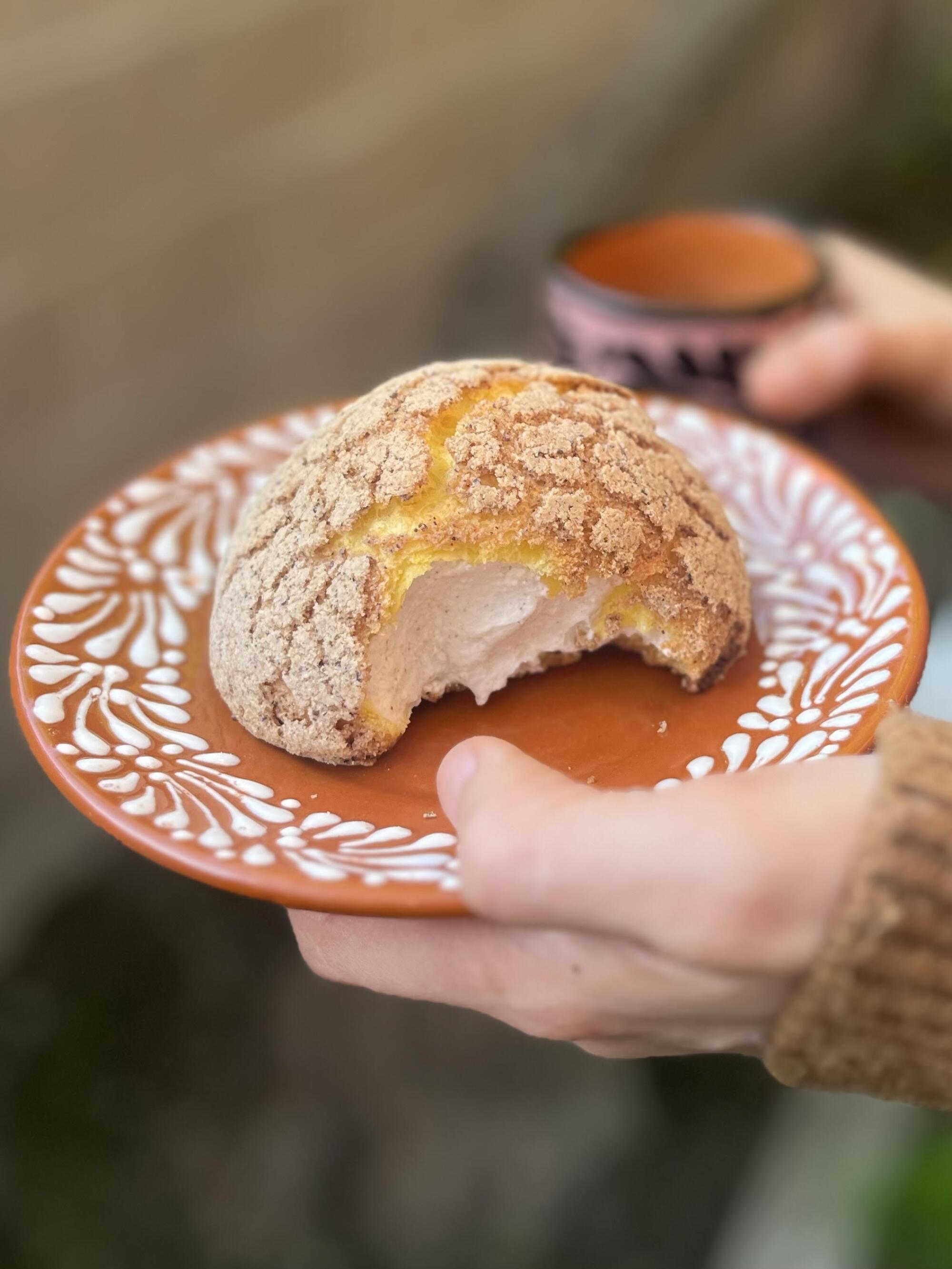
In L.A., Daisy Orozco and Irán Sánchez of Malcriada Coffee make a champurrado-flavored concha, and in development is a masa shortbread drink.
“Part of our mission at Malcriada is to ‘preserve and share the culture we inherited,’ so this is our way of sharing a beloved food to the world and we hope to do it in a dignified way,” they wrote in an email. “The persistence of maíz through generations is something we admire.”
Their hope is that masa-infused sweets will offer something unique to their Mexican community.
How do Mexican American writers and artists share their traditions with a market that often seems hostile to it? One solution: an iced horchata latte.
“We want to be the place where our friends, neighbors, family members feel welcomed and experience our hospitality. Our pinole concha cream puff has familiar flavors that people have connections with, but presented in a more indulgent way that they won’t find anywhere else,” they said.
Díaz, who speaks sweetly to the masa pastries while they bake, says working with nixtamal in pastry has had a larger impact that goes well beyond her cake pans.
“Working with maiz in pastry has taught me a lot about life in general,” they said. “You have to be willing to accept what you don’t know and [be] eager to take on the challenge of trial and error if you’re starting from scratch.”
Andrea Aliseda is a food and culture writer, vegan recipe developer and dog mom based in Brooklyn, N.Y., with published work in Harper’s Bazaar, Bon Appétit and Epicurious. She’s currently working on her debut plant-based Mexican cookbook, and you can find her on Instagram at @andrea__aliseda.
More to Read
The Latinx experience chronicled
Get the Latinx Files newsletter for stories that capture the multitudes within our communities.
You may occasionally receive promotional content from the Los Angeles Times.
